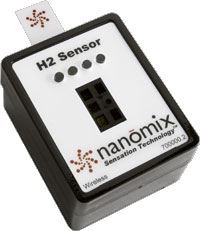Sensational detection
Concurrently, Nanomix has appointed KWJ Engineering as its first distributor with volume orders being accepted for the first time..
Emeryville, CA-based Nanomix has developed a hydrogen detector based on a carbon nanotube device that solves some of the headaches that plague users of traditional detectors.
Most current detection devices rely on catalytic bead or metal oxide sensor (MOS) technologies, which have significant performance limitations. While both technologies can detect hydrogen, the catalytic bead technology does not differentiate between hydrogen and other gases, such as propane, isopropanol and carbon monoxide leading to a high rate of false alarms. MOS based devices are also sensitive to temperature and humidity, as well as other hydrocarbons.
But the company says that its Nanomix Sensation nanoelectronic detection technology overcomes such false alarms, while providing other important features including increased safety, simple deployment accuracy, low power consumption, longer calibration intervals, and optional wireless system integration.

The Nanomix detector does so through the use of a detector that marries carbon nanotubes and silicon microstructures. The nanotube network itself is coated with a recognition layer that interacts with the chemical or biological analyte of interest – in this case hydrogen. Interactions between the recognition layer and the analyte result in a measurable change in the electronic characteristics of the detection device.
Register now to continue reading
Thanks for visiting The Engineer. You’ve now reached your monthly limit of news stories. Register for free to unlock unlimited access to all of our news coverage, as well as premium content including opinion, in-depth features and special reports.
Benefits of registering
-
In-depth insights and coverage of key emerging trends
-
Unrestricted access to special reports throughout the year
-
Daily technology news delivered straight to your inbox










UK Enters ‘Golden Age of Nuclear’
Apologies if this is a duplicate post - a glitch appears to have removed the first one: > While I welcome the announcement of this project, I note...